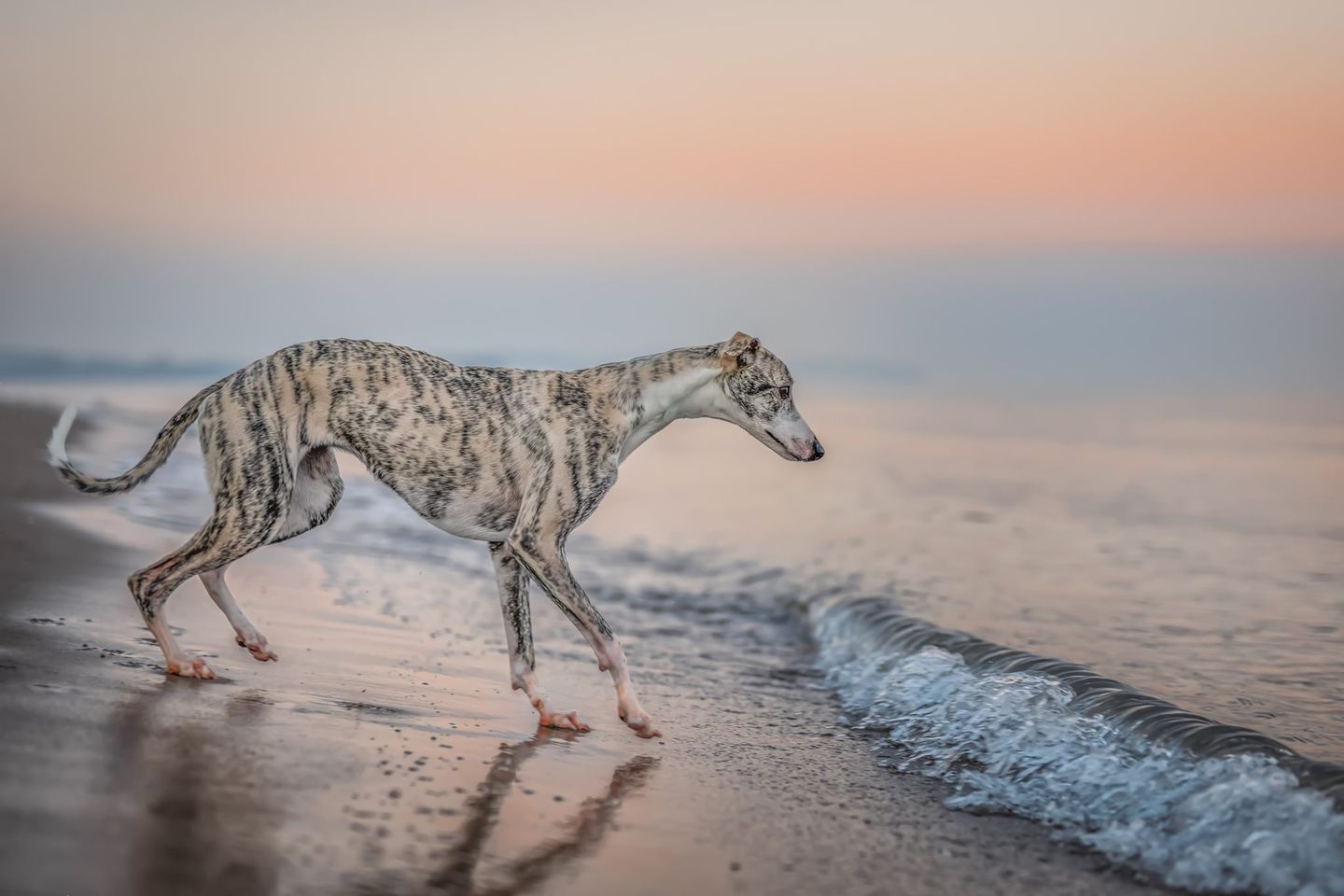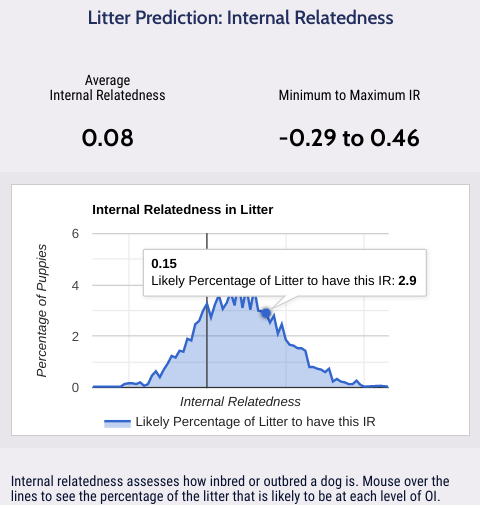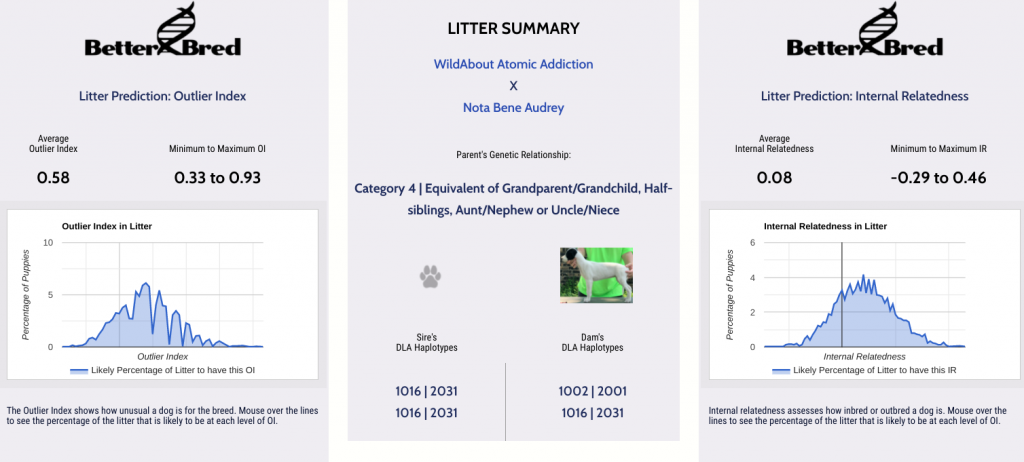
When linebreeding is inbreeding.
As a polar opposite of the last blog post that demonstrated that not all linebreedings result in inbreeding, this blog post will focus on when the genetic relationship predicted by our software matches the predicted relationship on paper. This demonstrates how important it is to assess the genetic relationships between relatives, should you choose to linebreed.

Linebreeding within a breed can be a powerful tool to preserve diversity.
Newer diversity advocates may cringe at the above statement, but it nevertheless is true. Variation within a breed, or biodiversity, can be preserved in many ways. One method of this preservation is to maintain distinct families within the breed that are sufficiently different from one another. Often the breeders of these families or bloodlines try to stay within their line as much as possible, toeing the line between too much linebreeding (and therefore inbreeding) and preserving their preferred type or style (because linebreeding is powerful to do this). As might come as a surprise for some, maintaining distinct bloodlines even when inbred can help preserve biodiversity within a breed. This happens because the variation that exists in the breed as a whole is conserved in those individual distinct lines. Should a breeder run in to problems or faults in their line, there will still be many other lines they can cross out to, as needed, which will be unrelated, and may have traits that are lacking in their own line. It is usually when ONE line becomes too popular and everyone breeds to them, that breedwide biodiversity is lost.
Now, it doesn’t take too much knowledge of genetics to understand that inbreeding can result in two of the exact same genes lining up together. This can be good when we want things like a brown coat, but bad when we have disease mutations that are recessive and then are more likely to express. This is why we always say, if you plan to inbreed (meaning you know your breeding will be close genetically), you simply must know your lines in and out. Do you know what weaknesses the line might have lurking and the risk you are taking on? These weaknesses can be anything from undesirable structure or temperament or a susceptibility to a disease. This is one reason to caution new breeders, especially those without a seasoned mentor who knows the lines, against taking on the risks of linebreeding.
For example, the research into Standard Poodles indicated that sebaceous adenitis (SA) is a recessive component disease, meaning multiple genes that are the same or homozygous are needed for this to express. So inbreeding on lines that have had SA would increase risk of this disease being expressed in the offspring.
Therefore, regardless of how you choose to breed, we advocate knowing and being comfortable with the actual genetic level of inbreeding that your intended match will produce.
Let’s look at a linebreeding on paper and in actuality!
Recently we requested “volunteer” studs and bitches in our Facebook group for another test breeding demonstration. One of the volunteers was an uncle/niece Whippet pair. (Note: this breeding will not take place.) When looking at the genetic relationship between these two, we see that they are JUST as closely related to one another as demonstrated by their pedigree: namely, they are category 4 – equivalent of uncle/niece.
So, let’s see what this looks like if we go ahead and run this test breeding. Remember that Dr. Niels Pedersen DVM PhD, the creator of this diversity panel, has said that an IR of .15 and above is considered to be a high level of inbreeding, so we advise against producing puppies at this level of inbreeding in general circumstances.
Looking at the predicted IR values for 3000 simulated puppies to the left, we see that a high proportion of the litter would fall at or above the high inbreeding level of .15. All the puppies to the right of the line would be above that measure in inbreeding. What about if we take a look at the other aspects of this breeding? Is there anything that would be good?
Another aspect of this testing is to determine where a dog falls in relation to the breed – eg. does the dog carry genetics that are well represented and unlikely to be lost to genetic drift, or the opposite, genetics that are less well represented in the population?
To preserve biodiversity, we use the outlier index (OI) on our website paired with lower inbreeding to slow the degradation of a breed’s biodiversity. In that light, this breeding would preserve this lines’ genetics, which are slightly atypical for this population.
Here we see the OI average for this breeding will be well above the breed average of .42 at .58. (Learn more about the Whippet breed’s averages on their breed page, or look for your own on the BetterBred website!) This indicates that while inbred, the puppies in this litter would also be significantly different from the breed as a whole. So like we discussed above, assuming this line is healthy and has good structure and temperament, this breeding could create a distinct pocket of genetic variability within the breed as a whole, and preserve that variability through linebreeding.
Not surprisingly, due to how related these two are to one another, they share one of the same DLA haplotypes, which also happens to be a very typical DLA haplotype in this breed. This means 50% of the offspring will be homozygous for the same haplotypes. (Learn more about DLA here!).
So might there be argument for this type of breeding?
Sure. This type of breeding can create a distinct bloodline, set type, drive, and structure in place that a breeder might have as her goal. And, homes value predictability in their puppies just like breeders! However, a breeder must be comfortable with the potential downsides of such high inbreeding, and know these lines well! They should also be prepared to be responsible for any problems that come up in such a breeding, since it would likely produce highly inbred puppies, and that will increase risk of recessive component disease expression.
Anyone who has bred long knows breeding is more nuanced than breeding for outbred puppies!
Whether you want to breed the outbred-iest of the outbred puppies or linebreed to set your type, our tools can help you achieve your goals. Join us here!


 Previous Post
Previous Post Next Post
Next Post


